versioning_data_scripts
Previous: Managing Conflicts
Objectives:
- Learn how to amend a commit
- Learn how to revert a commit
- Learn how to work with a previous commit
- Learn how to temporarily hide work in progress
Please download the additional workshop file zip archive and unzip it.
Working with Commits
Sometimes a simple commit isn’t that simple: you’ve forgotten something, you need to undo what you’ve done, or you need to go back to something you committed some time ago. This section with help you navigate these items.
Amending Commits
Oops! Pushed ‘Commit’ button too fast? As long as you have not updated any remotes, you can amend the last commit message, add additional changes, or both.
Let’s demonstrate this by updating our data. Let’s add the anscombe.tsv and pi_trails_values.tsv files to our data/ folder, and then stage / commit in GitKraken:

Oh! But we forgot to remove the superfluous Stata file. Delete the gss.dta file, and back in GitKraken, click on the //WIP node on the graph:

stage the file change to include in the updated commit and select the Amend checkbox in the Commit Message pane:
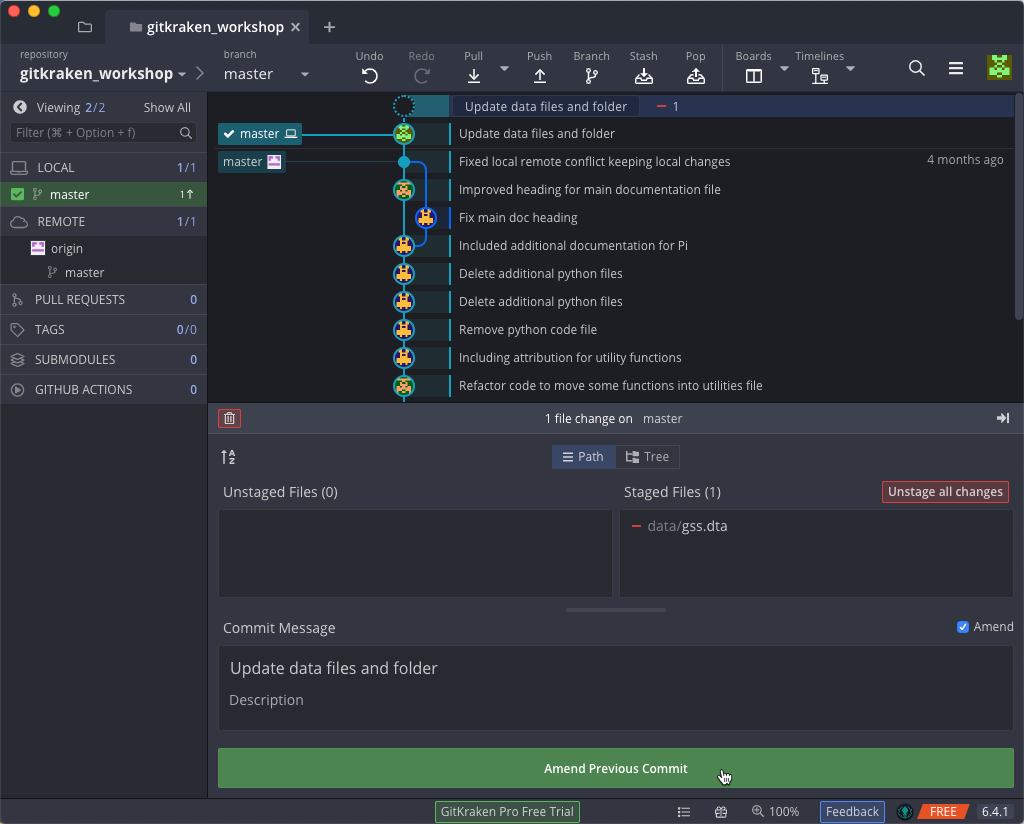
You’ll note that the previous commit message is copied into the Message and Description fields. And the Commit button is titled Amend Previous Commit instead. Go ahead.
If you wish to amend the message only, hover over and click on the commit message in the bottom pane for the latest commit:
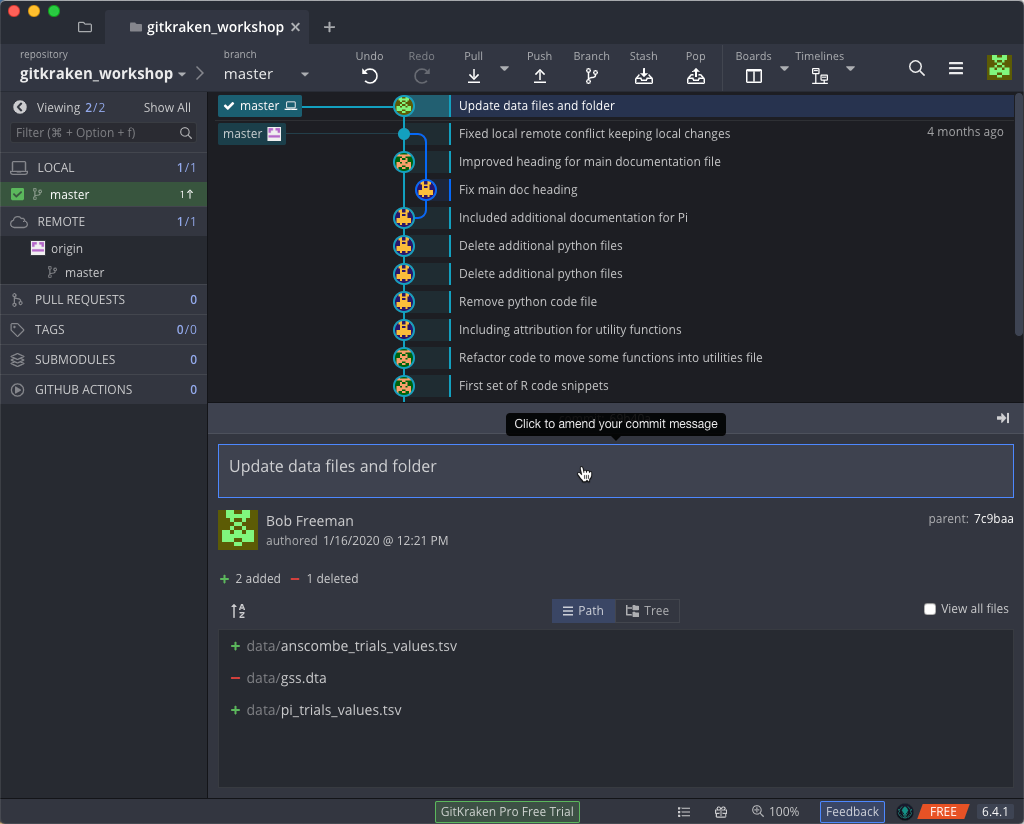
Change your commit message, and click on the Update Message button at the bottom:
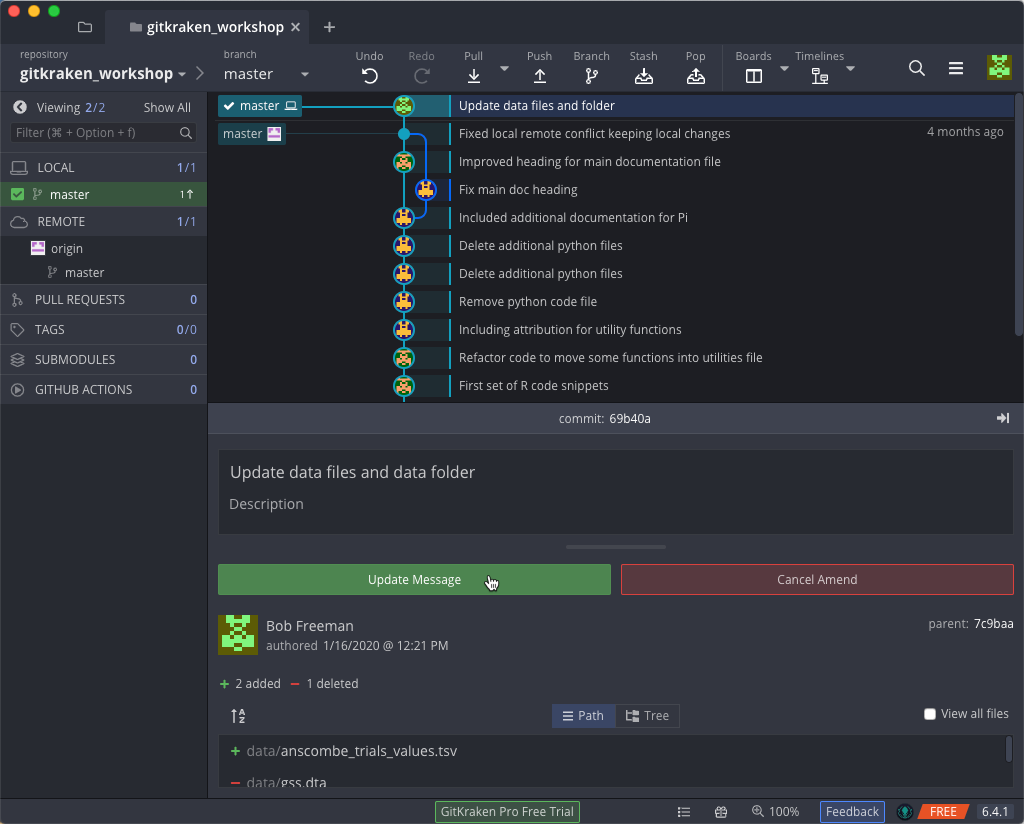
Reverting Commits
Sometimes you just want to undo the last thing you did. Like that last change (e.g. commit, branch, etc) you didn’t mean to make? GitKraken’s Undo button in the top toolbar will let you undo most actions (which can also Redo if needed!).
Let’s try this ourselves: in your Finder or Explorer window, let’s delete the other R code files that were intermediates in the code/ folder: example_Rcode.R, scriptlets-stage2.R, and scriptlets-stage3.R. Continue on to stage and commit this deletion.

Now, we can hover over the Undo button to see what action it will take, and click if that seems appropriate:
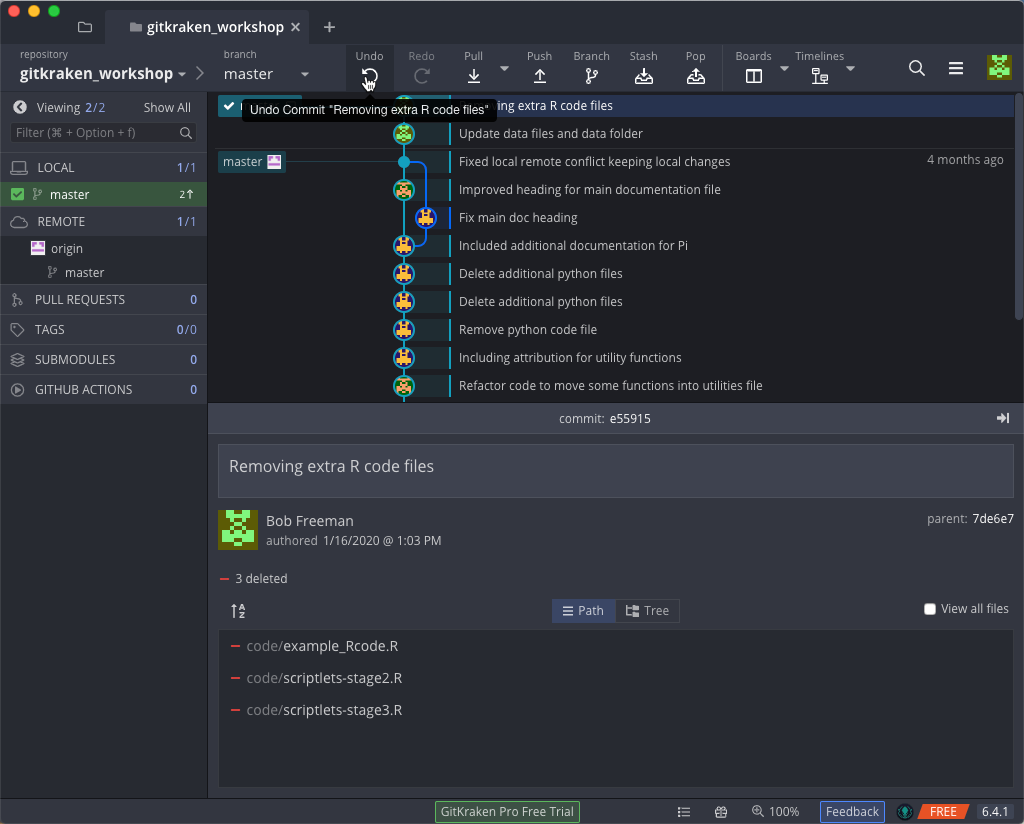
If the Undo option is not available or not appropriate, one can use the Revert Commit option for the latest commit or even a previous one. This will not only bring back the changes to your working directory, but will include an explicit commit to document that this change to the repo.
To perform this, click on the appropriate commit node (our last one), and right-mouse click to see the popup menu. From there, select the Revert Commit option:
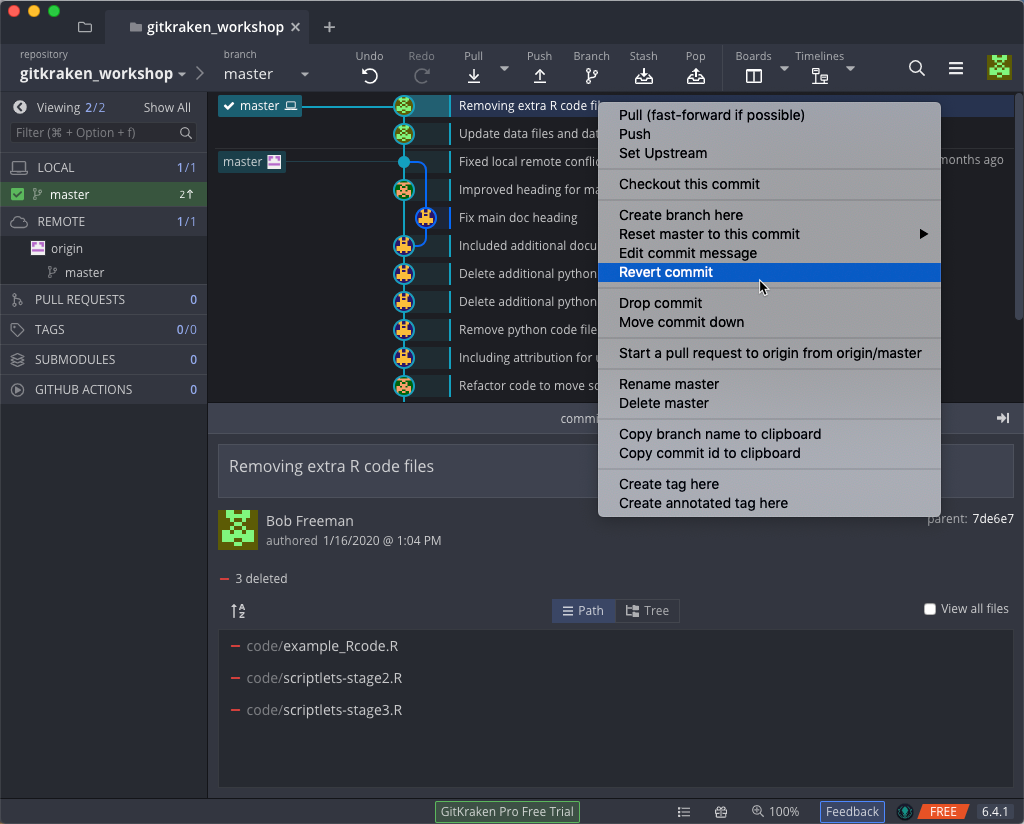
When prompted, you can immediate commit this explicit change – Yes choice – or keep the changes as a WIP (work in progress) for you to do additional work – No choice.
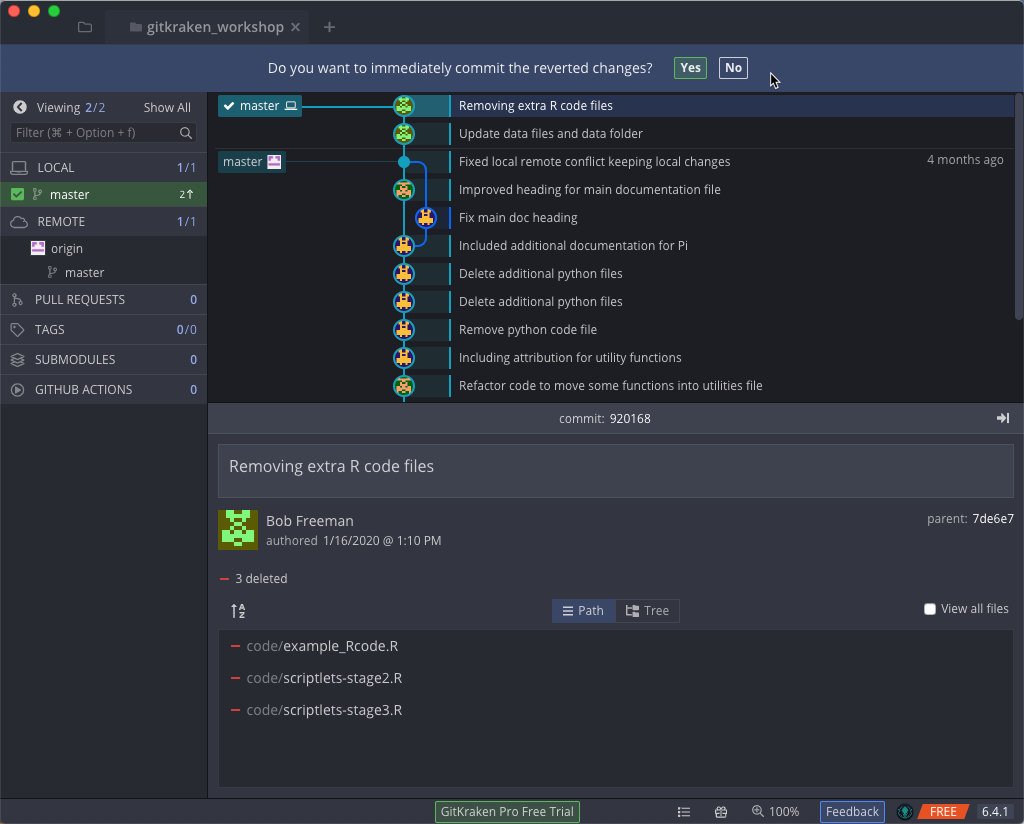
Clicking Yes enters the new commit to your repo:
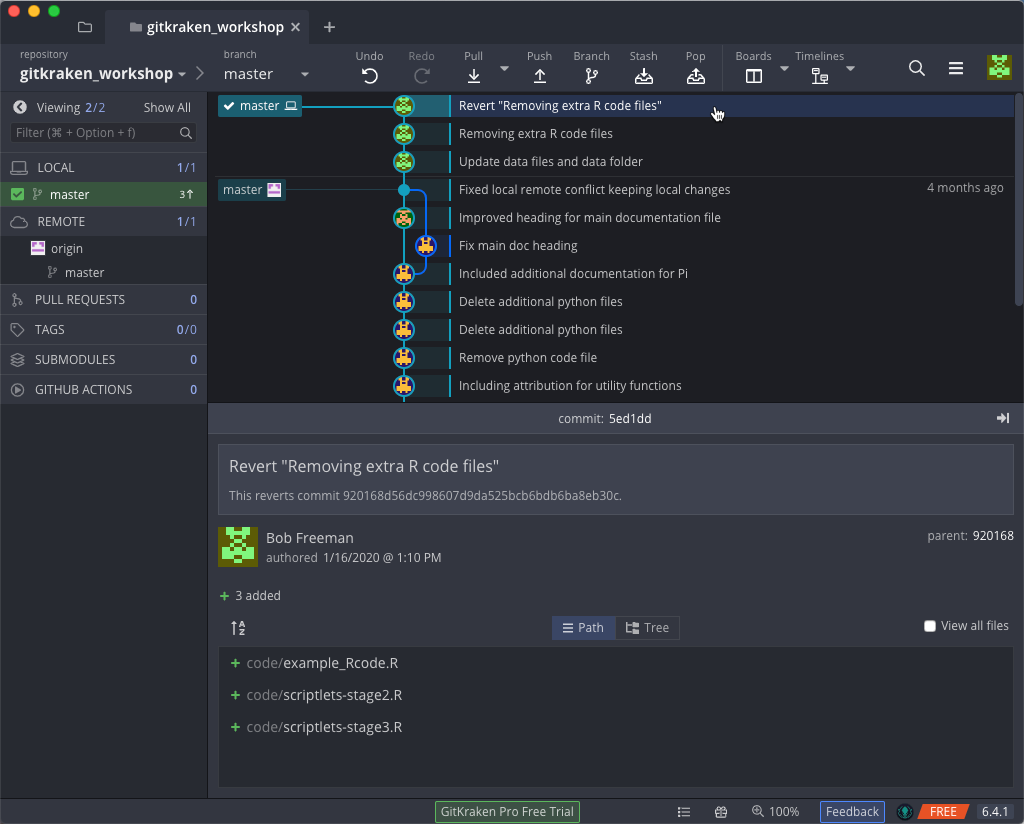
Exercises:
- Coming Soon!
Resetting (Checking Out Previous) Commits, and Stash/Pop
At times, there may be the need to go back in history to a previous commit: perhaps you wish to retrieve files that you’ve deleted or changed, or perhaps you wish to inspect the state of your project and code to inform current work. No matter, like a time machine, Git allows you to go back in time – move the pointer on your repo to any commit – and it will likewise change the repo files and structure to reflect that.
To get us there, we’re going to do additional cleanup on our project repo. In docs/, we can delete the Sailfish.docx file, and let’s add the Frank Anscombe - Wikipedia.pdf from our recently downloaded workshop zip archive folder. You know the drill: stage & commit (rinse & repeat):
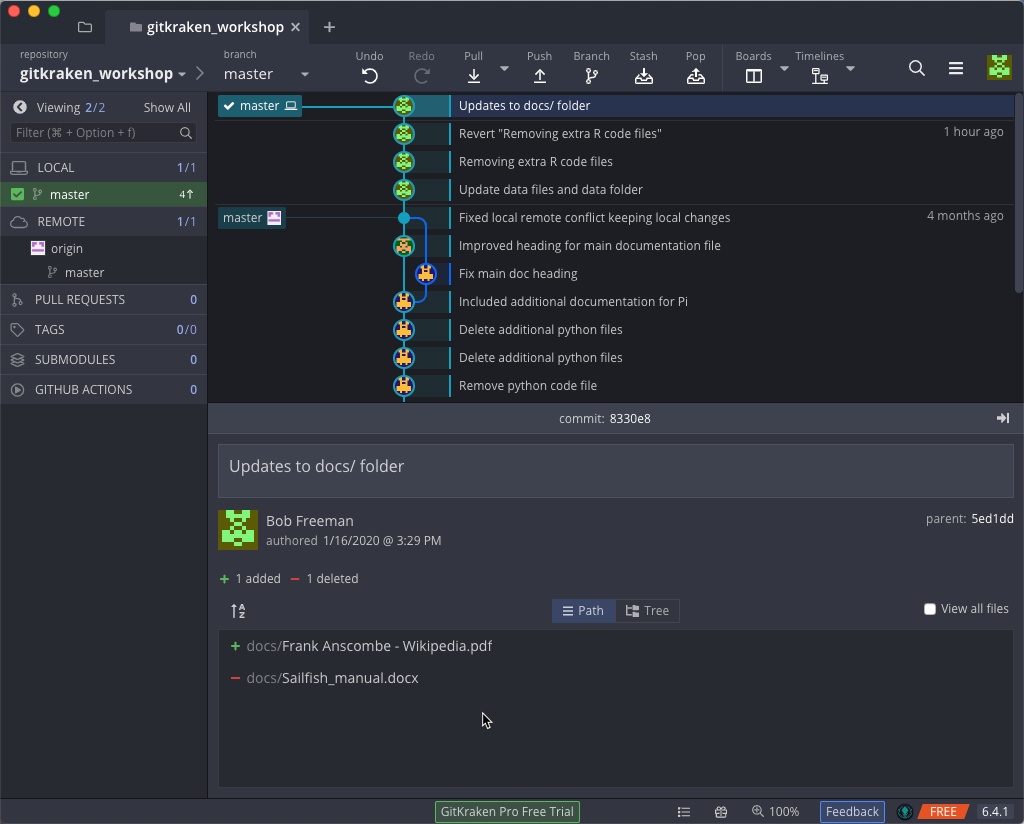
Moreoever, our R code snippets are still relevant, so we’ll create an other/ folder inside code/, and place the three files there (scriptlets-stage2.R, scriptlets-stage3.R, and example_Rcode.R). Your repo should look like:
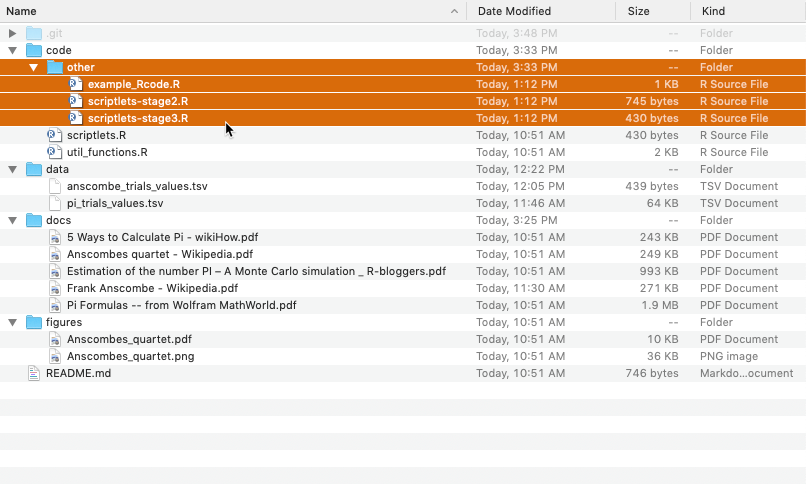
Back in GitKraken, this creates a WIP entry. Your commit timeline should look like the following:
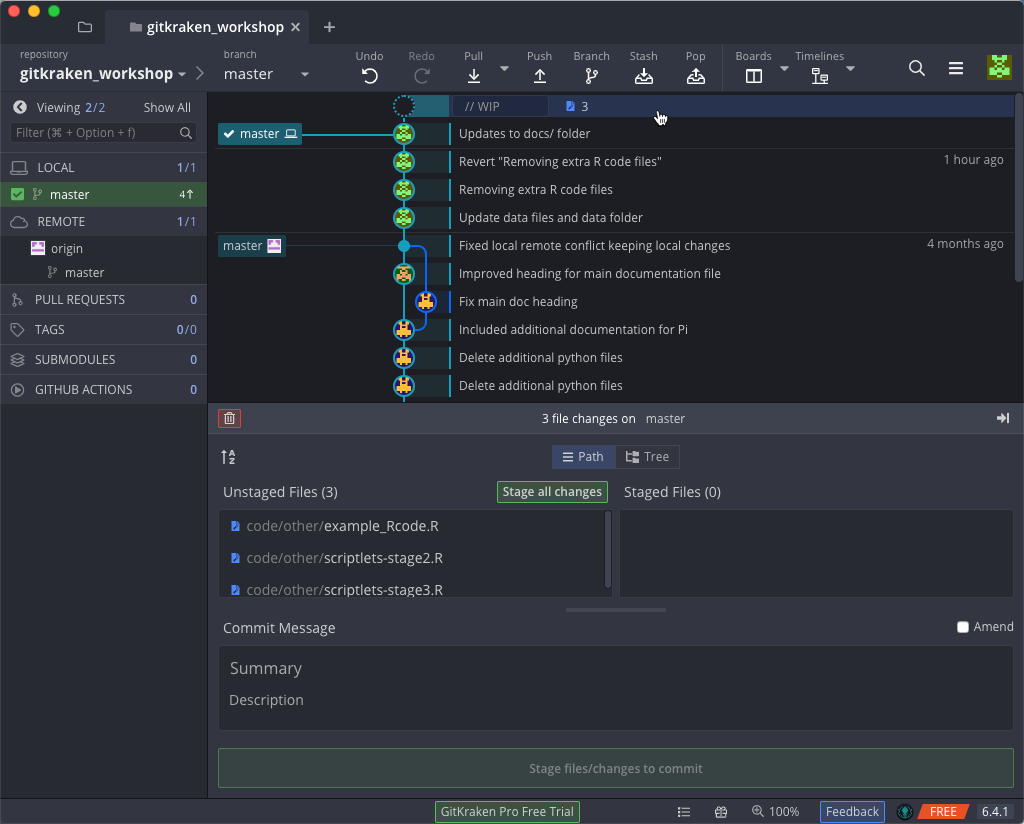
But we realized that we had, in previous commits, deleted other script files – the python scripts. Now, we want those back. Working with a previous commit will help us here.
If we right-click on the commit prior to where one had been first deleted, “Remove python code file”, we have an option to “Reset master to this commit”, with three options: soft, mixed, and hard:
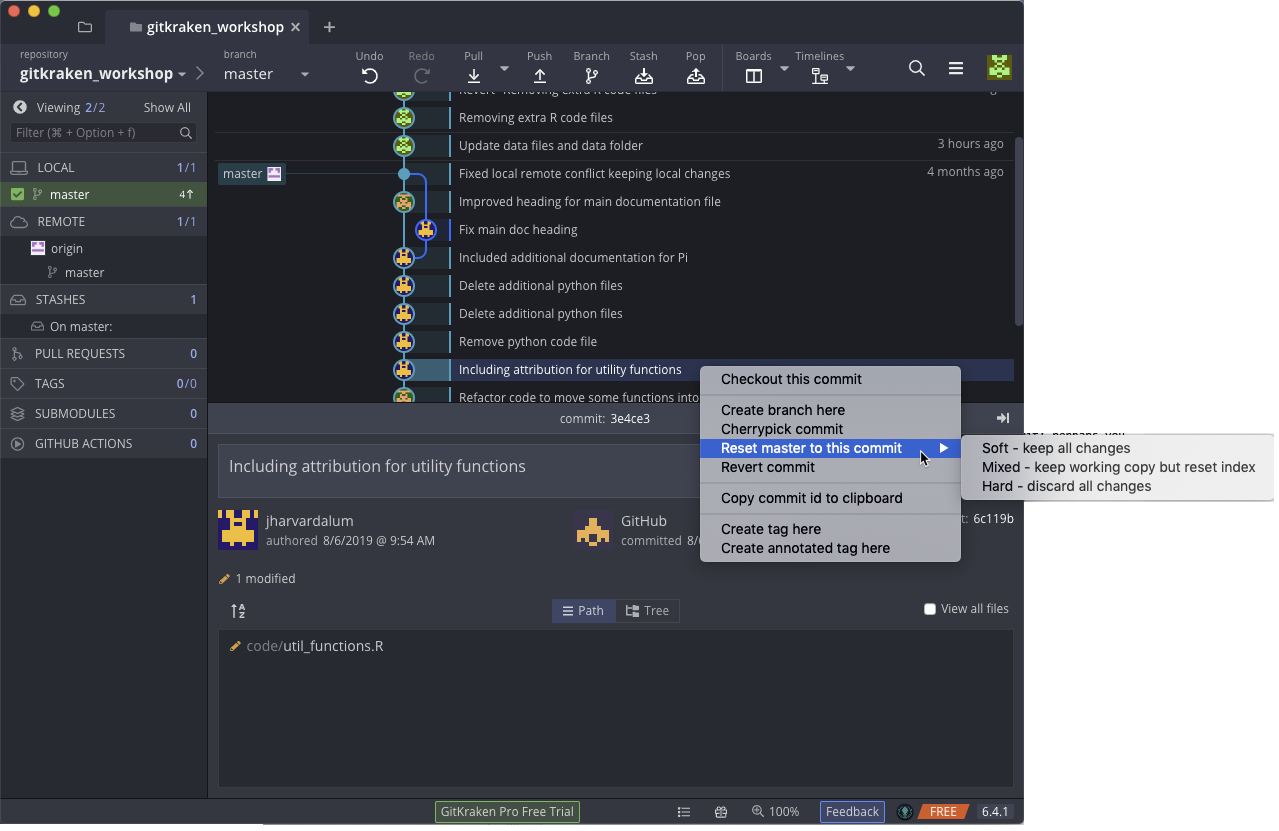
Although using the ‘soft’ option may seems safest – keeping any changes – one could run into problems if there are files that overlap or change over time. We don’t want conflicts. But the ‘hard’ option seems extreme. What about the files we’ve added to our project that haven’t yet saved?
Stash to the rescue! This option let’s us hide our current work and changes to a safe, hidden, location, so that when resetting our commit pointer we won’t lose our work.
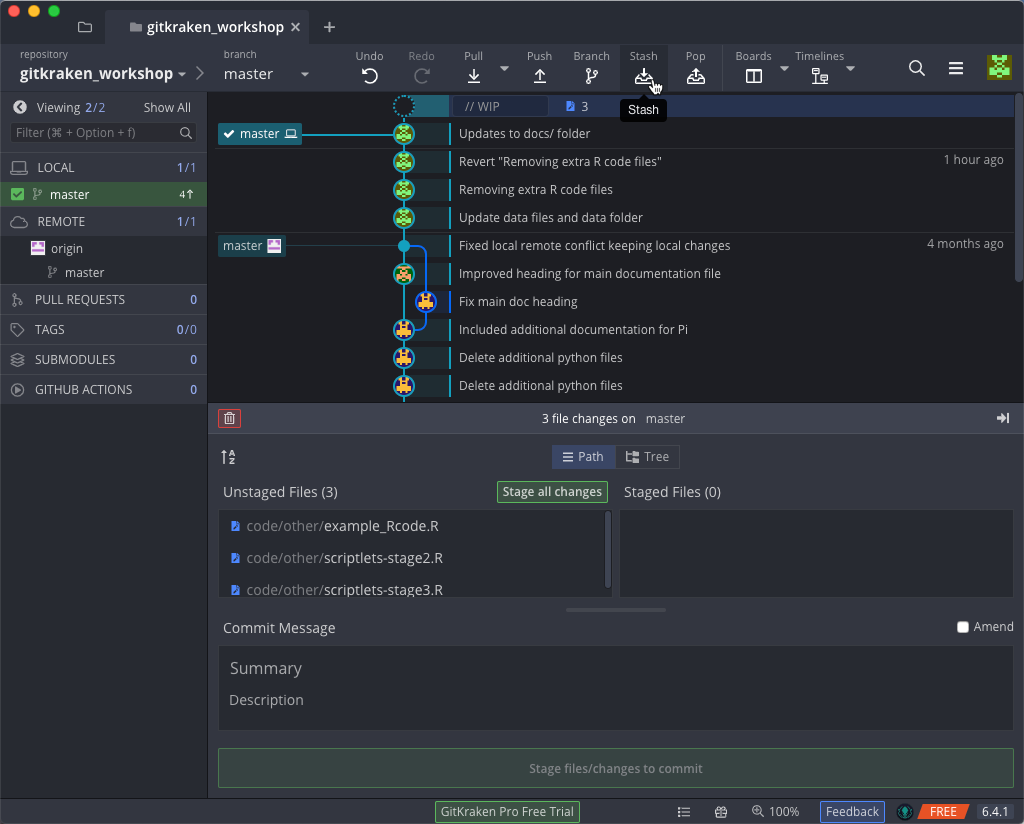
After stashing, we have an indicator that our files are safe; and we can see the previous commit is still present:
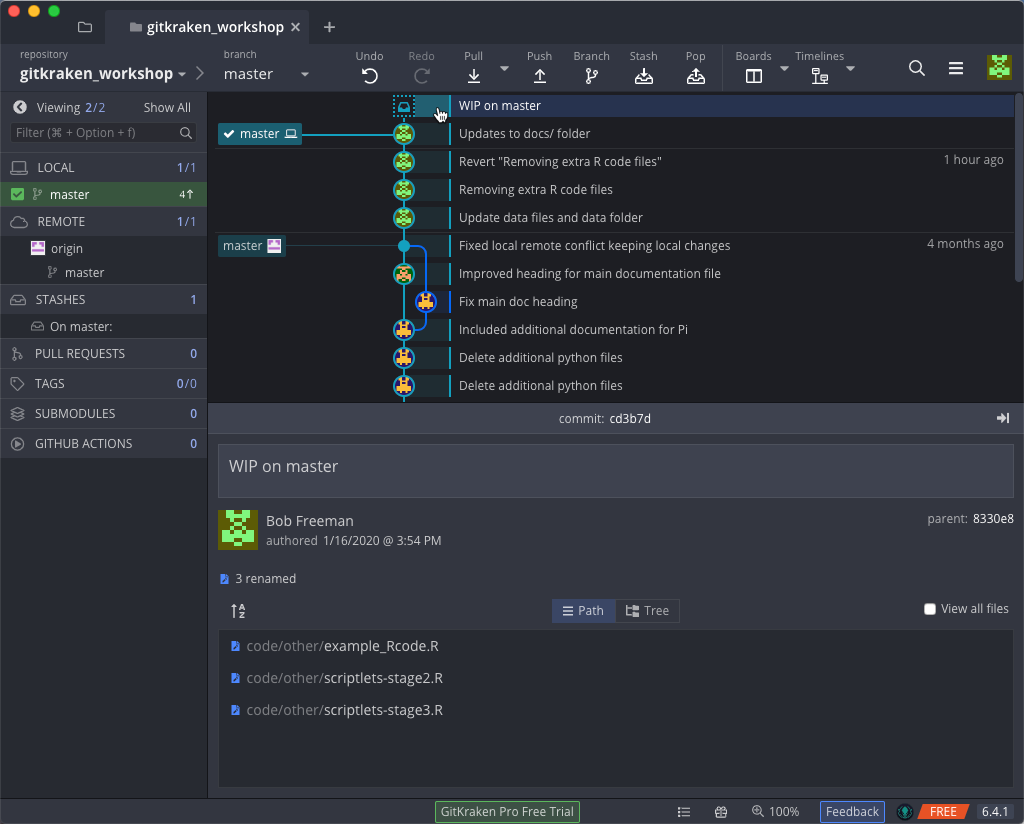
So let’s go back to our previous commit “Remove python code file” and click on it to highlight:

Right-mouse click, select “Reset master to this commit”, and the option “Hard - discard all changes”:
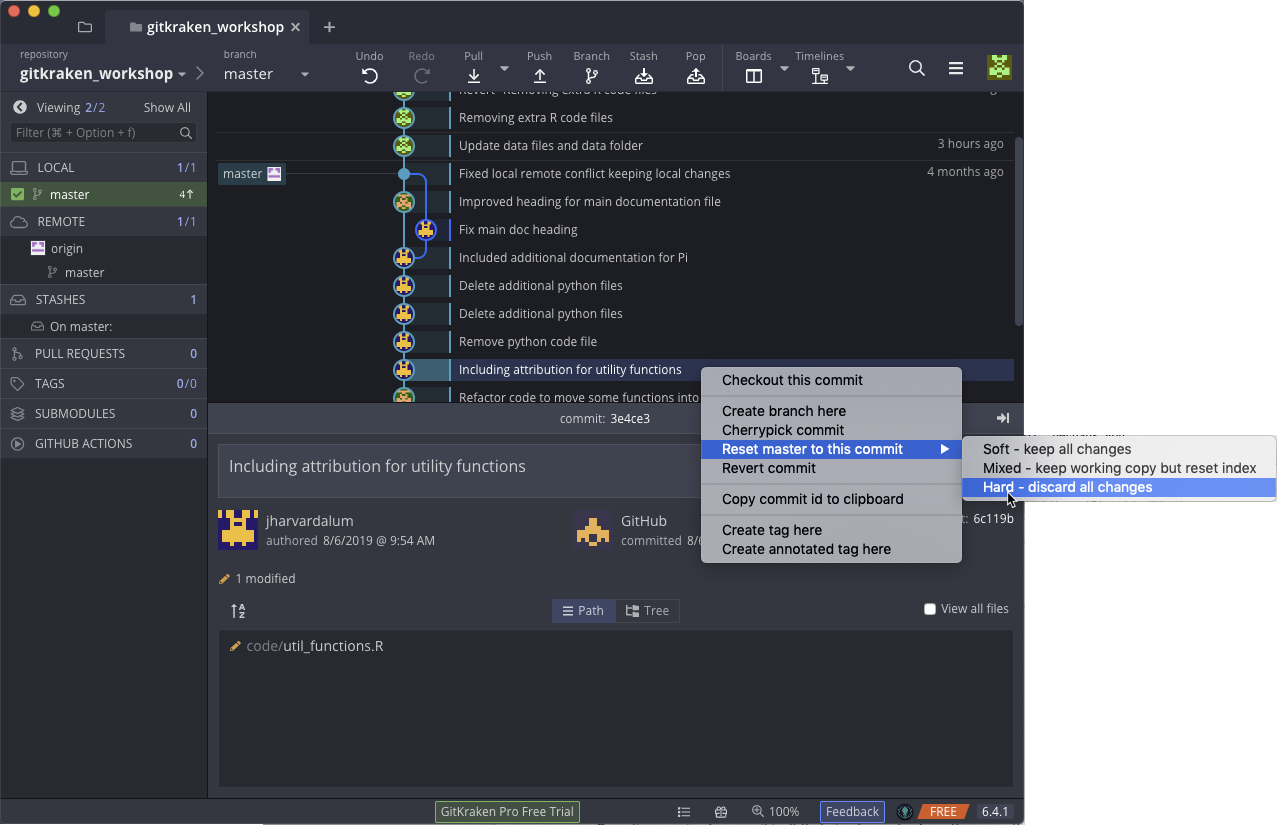
Your commit pointer for local repo will now point to this commit:
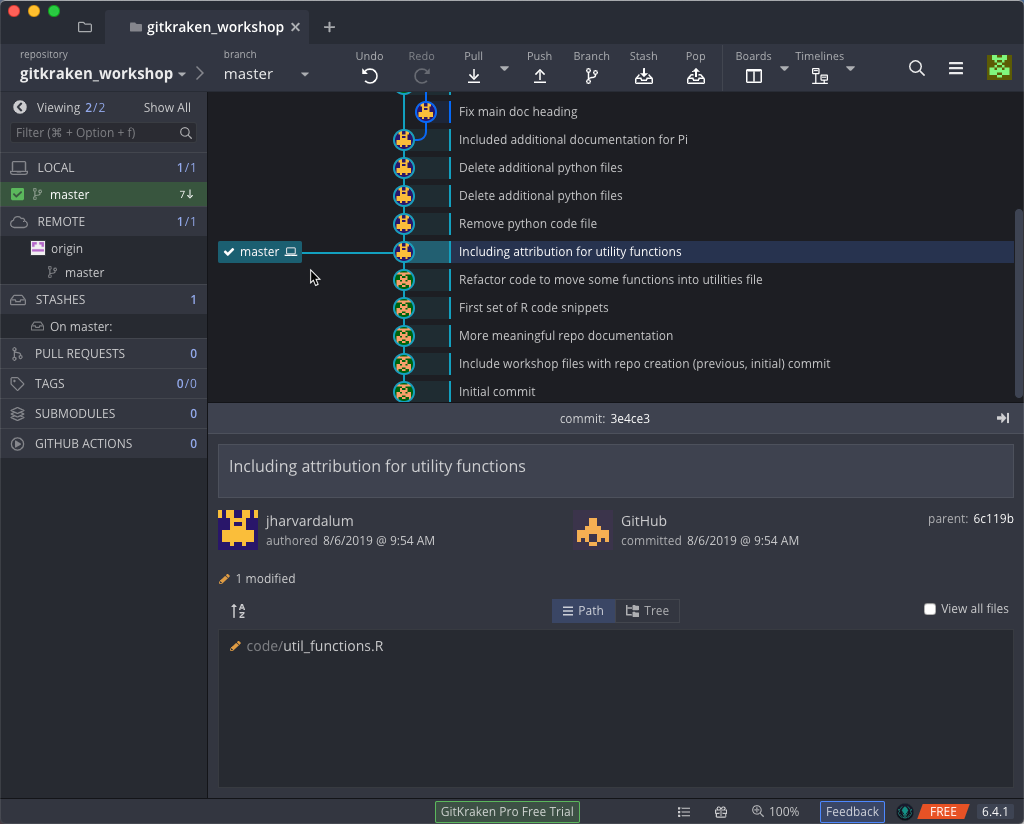
and the project repo will change accordingly:
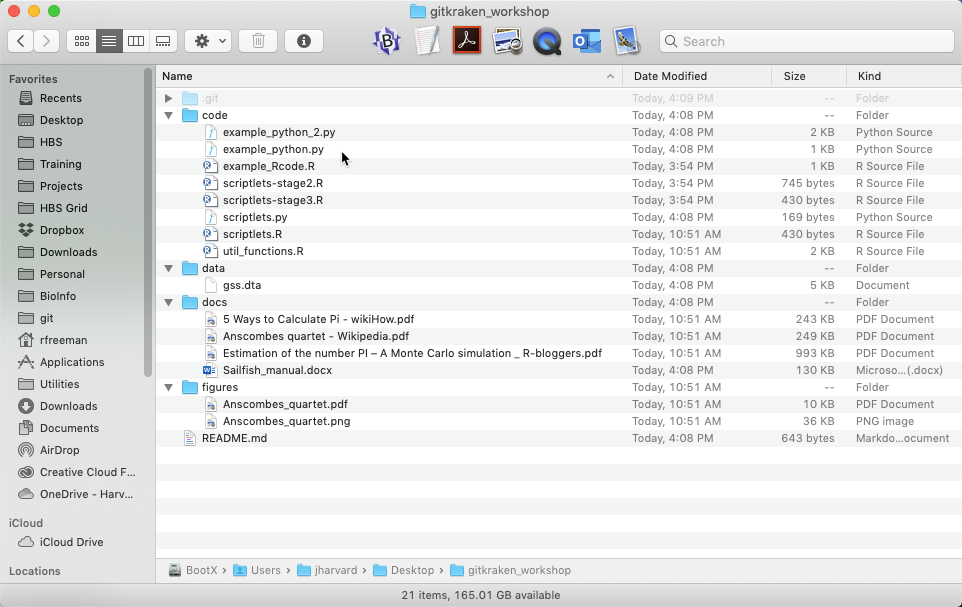
Let’s grab the three files from our project repo – example_python_2.py, example_python.py, and scriptlets.py – and set them aside. Let’s fast-forward the commits to go back to our previous state by highlighting the last commit, right-mouse click it, and select the same reset commit options: “Reset master to this commit” > “Hard - discard all changes”:

Now that we’re back to where we were, let’s get our stashed, hidden repo changes back by highlighting our top, stashed timeline entry (“WIP on master”) and then using the Pop option:
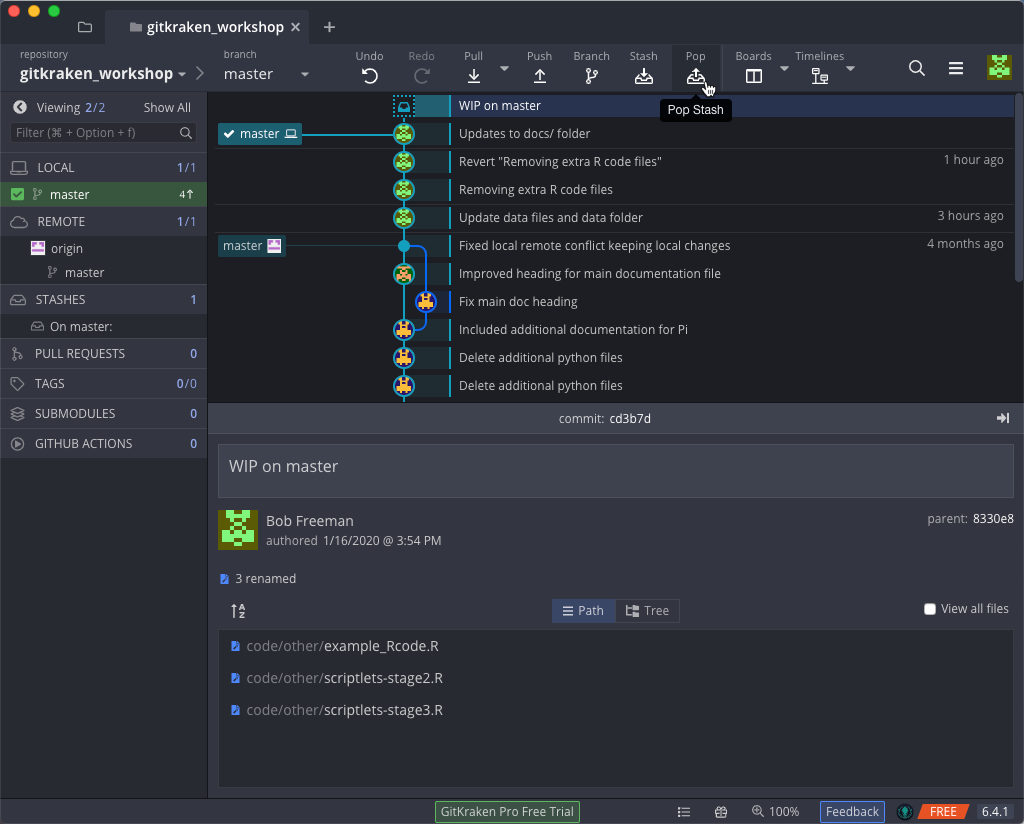
Once popped, we can see our files where we’d left them. You may need to Unstage in order for GitKraken to recognize the files as a ‘move’ once again:
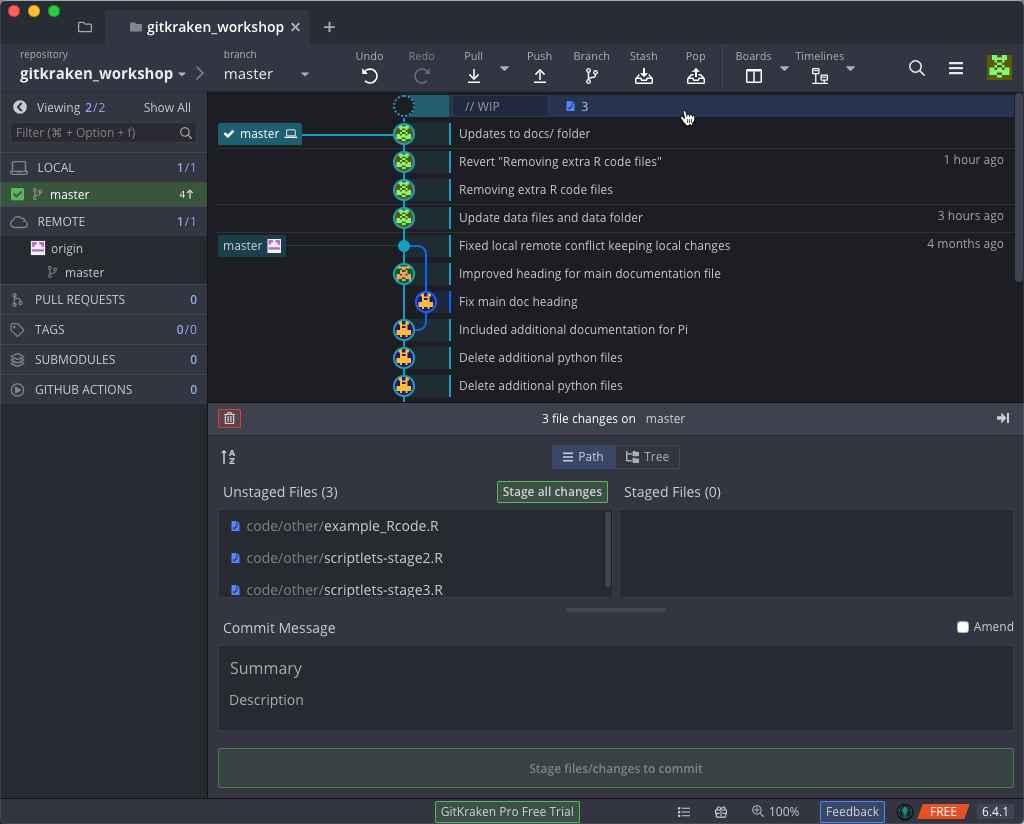
And finally, let’s add our files into the other/ folder, reflected both in our filesystem:
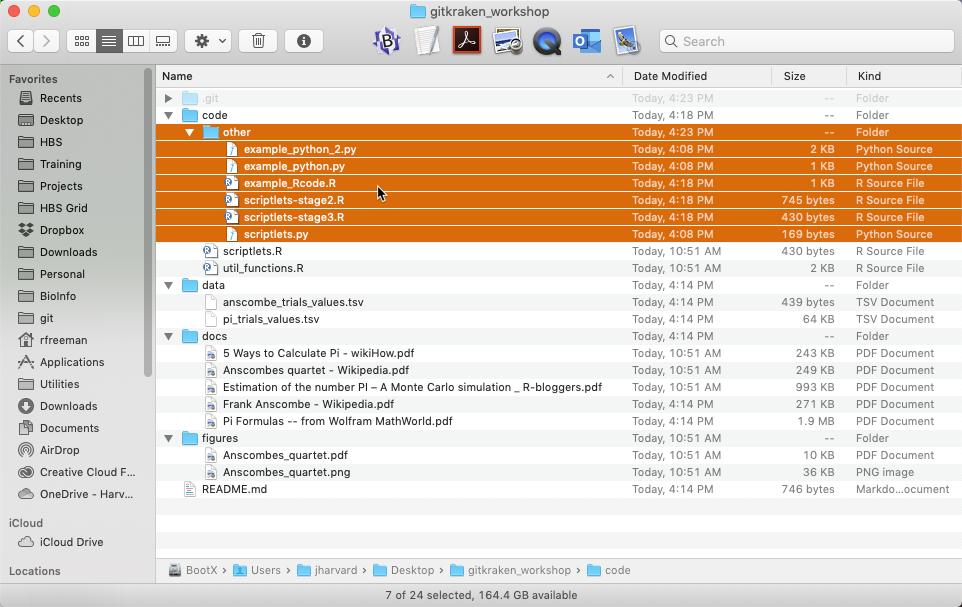
and continue on to make this stage and commit in GitKraken:
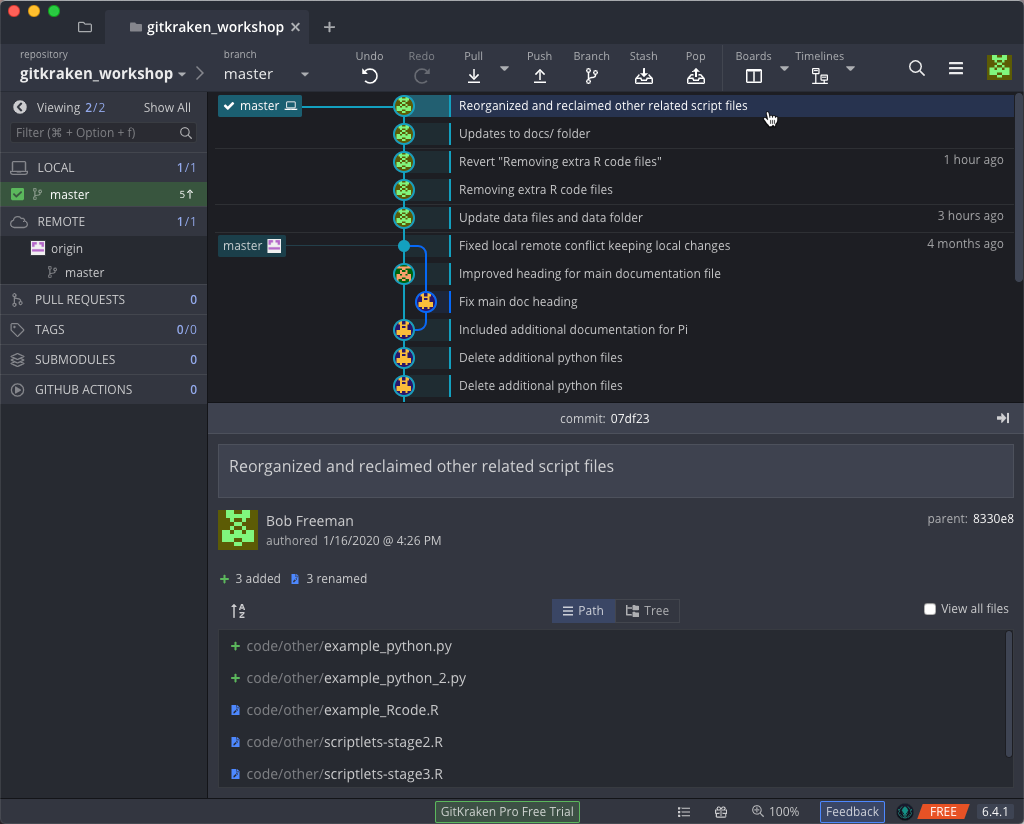
Exercises
- Coming soon!
Next steps and Resources
GitKraken offers an easy way of getting started with GitHub and version control. Depending on your use case it may be sufficient for your needs. If you are already familiar with using the Command Line then using Git on the Command Line is recommended.
This lesson introduced you to the most rudimentary (yet very useful) concepts and terminology associated with using Version control (Git). The resources below will allow you get started with getting a deeper/better understanding of version control.
- The GitKraken guide is a great way to start exploring it’s functionality, and learning more about what Git can do.
- GitHub also provides extensive support in the form of guides and help.
- GitHub Glossary outlines the most commonly used GitHub/Git terminology.
-
Materials used in these lessons are derived from Daniel van Strien’s “An Introduction to Version Control Using GitHub Desktop,”, Programming Historian, (17 June 2016). The Programming Historian ISSN 2397-2068, is released under the Creative Commons Attribution license (CC BY 4.0).*
-
Materials are also derived from Software Carpentry instructional material. These materials are also licensed under the Creative Commons Attribution license (CC BY 4.0).*
-
Materials are also derived from GitKraken Support for Git Client on GitKraken’s website.